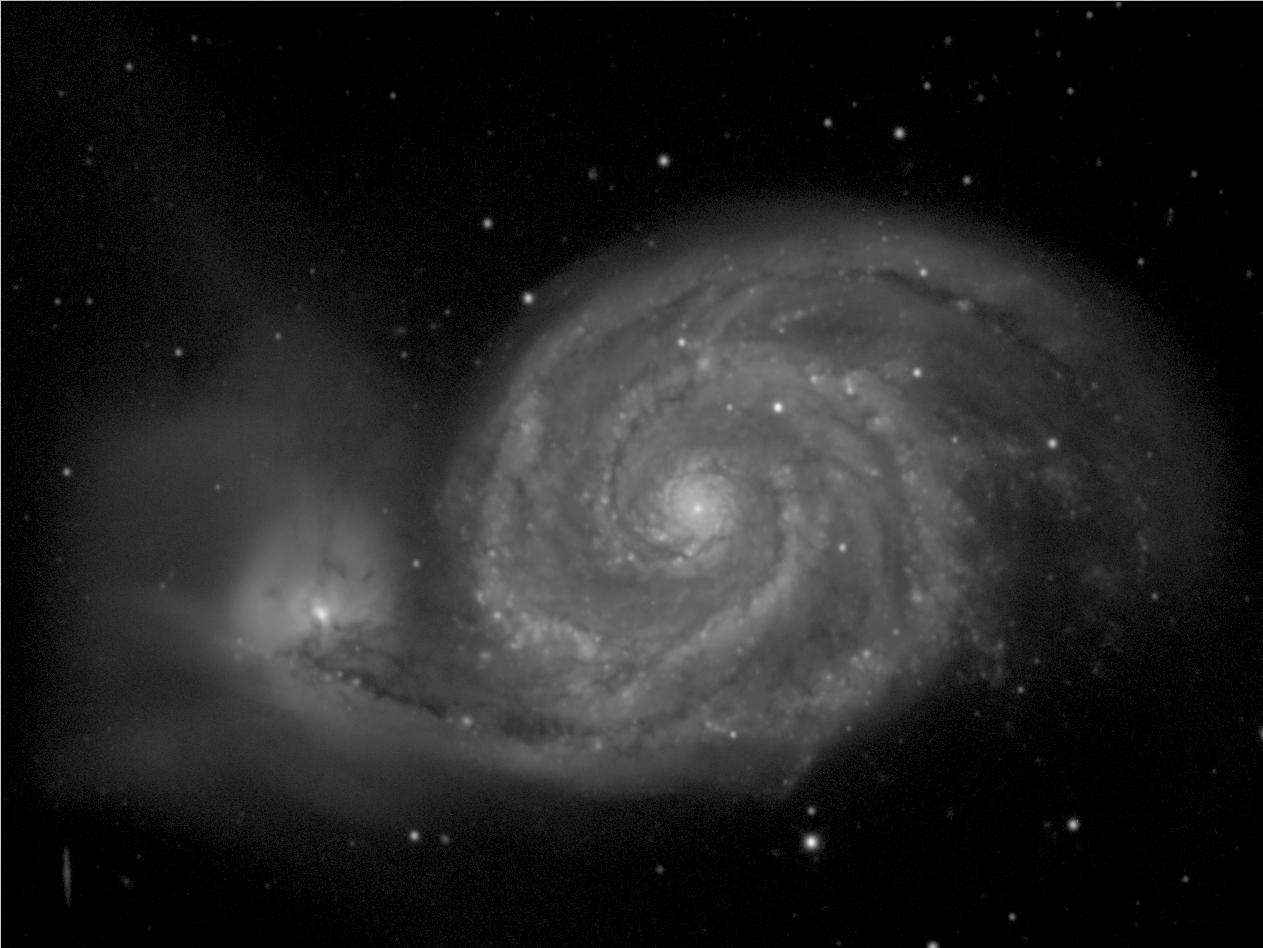

De Vaucouleurs Atlas Type: SA(s)bc+I0/SB(r)0+ pec
Filter: B
Telescope: USNO 1.0-m
North left , East down
Field Dimensions: 14.2 x 10.7 arcminutes
RC3 Type: SA(s)bc pec + I0 pec
RSA Type: Sbc(s)I-II+SB01pec
Surface Brightness Range Displayed: 17.0-26.0 mag per square arcsec
Absolute Blue Magnitude: -20.7
Elmegreen Spiral Arm Class: AC12
De Vaucouleurs Atlas Description:
M51 is for the most part a very regular Sbc spiral. In blue light the arms are very patchy, and strong dust lanes lie on the concave sides of the arms, where density wave theory predicts they should be located. The dust lanes represent spiral shocks. The arms and dust lanes wind down to the ends of a small, patchy central oval. The core is small and the oval is weak enough in blue light to be ignored. Although the galaxy is not exceptionally asymmetric in blue light, its symmetry in the I-band image is remarkable. The stellar background spiral is very strong and even the dust lanes in the two far outer arm regions are symmetric. The central oval is also more obvious in I.
In blue light, NGC 5195 is a very strange-looking object: it is riddled with complex dust patterns and shows tidal features to its north, east, and west. In a K-band (2.2 micron) image (Block et al. 1994), NGC 5195 looks very much like an SB0 with an inner ring . Already, this morphology can be seen in the I-band. The I0 classification for this galaxy is strictly valid only for the B-band where the dust masks the true morphology. At longer wavelengths, the classification is SB(r)0+.
The appearance of both galaxies in the B-I color index map is truly remarkable. The spiral shows arms lined with active star-forming regions and a rich, complex dust pattern, illustrating even better than the direct images the way the main dust lanes lie on the concave sides of the arms. In the center, there is a dust oval surrounded by an oval ring of lightly blue knots. This ring is where the spiral pattern ends in the inner regions. In contrast to M51 , there is no color contrast associated with any stellar part of NGC 5195 . Instead, the region of this galaxy is marked entirely by complex dust filaments and patches. The map also shows that the tidal plume representing the continuation of of the major arm passing in front of NGC 5195 is a region of enhanced blue colors.
The M51 system has been the subject of many studies, from kinematics and dynamics (Tully 1974) to numerical simulations of the interaction (Salo and Laurikainen 2000a,b).